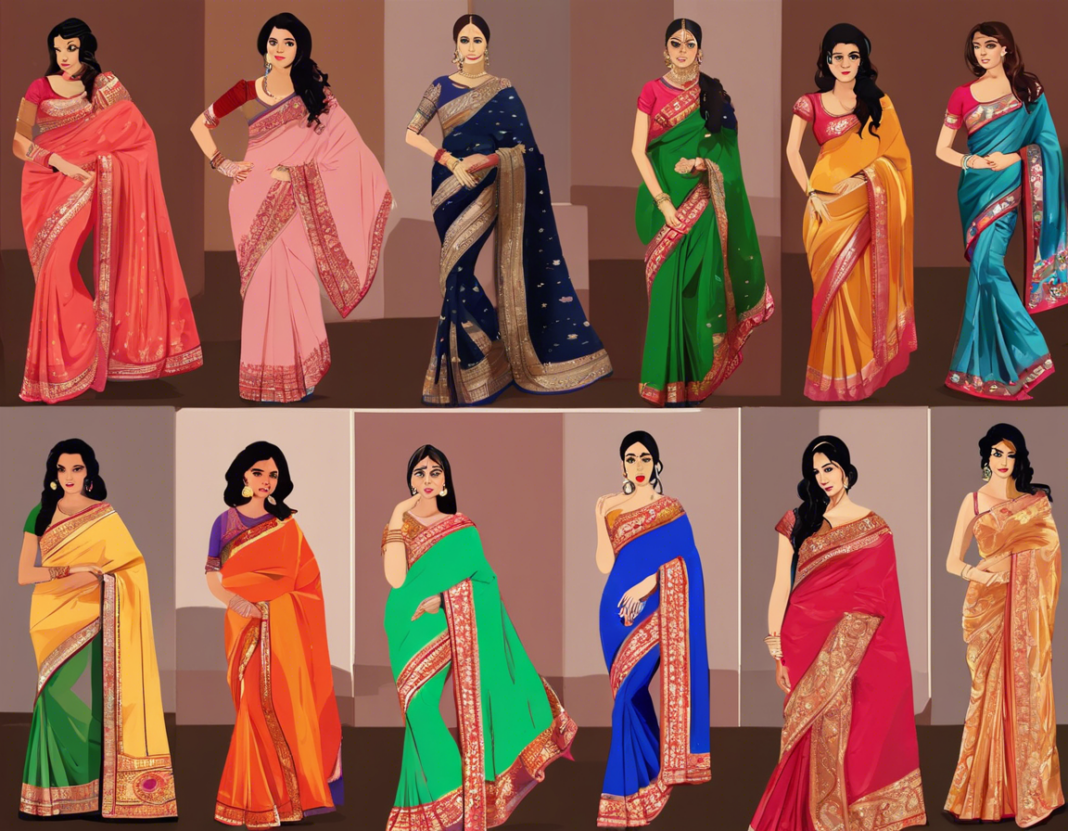Sarees are an integral part of Indian culture and fashion, showcasing the richness of tradition, diversity, and artistry. Each region in India has its unique style of saree, showcasing the craftsmanship and history of the place. From traditional silk sarees to modern designer ones, the variety is immense. In this article, we present an A to Z Saree Name List Glossary that encompasses a wide range of sarees from different regions of India.
A
Assam Silk Saree
Assam silk sarees, also known as Muga silk sarees, are famous for their golden luster and durability.
B
Banarasi Saree
Banarasi sarees from Varanasi, Uttar Pradesh, are known for their intricate brocade work and are popular for weddings and special occasions.
Bandhani Saree
Originating from Rajasthan and Gujarat, Bandhani sarees are tie-and-dye sarees representing vibrant colors and patterns.
C
Chanderi Saree
Chanderi sarees from Madhya Pradesh are known for their sheer texture and light-weight feel, perfect for summers.
D
Dhakai Jamdani Saree
Hailing from Bangladesh, these sarees are made using the traditional Jamdani weaving technique, known for their intricate designs.
K
Kanjeevaram Saree
Also known as Kanchipuram sarees, these silk sarees from Tamil Nadu are famous for their rich texture, vivid colors, and heavy zari work.
P
Paithani Saree
Originating from Maharashtra, Paithani sarees are characterized by their peacock motifs and luxurious silk fabric.
T
Tant Saree
Tant sarees from West Bengal are known for their light cotton fabric and beautiful borders, perfect for daily wear.
U
Uppada Saree
Uppada sarees from Andhra Pradesh are known for their soft texture, light feel, and intricate designs, usually made of silk or cotton.
Z
Zardosi Saree
Zardosi sarees are heavily embellished with zari and metallic threads to create stunning designs, popular for weddings and festive occasions.
Whether it’s for a traditional event, casual wear, or a formal gathering, there is a saree for every occasion. Each saree has a unique story to tell, reflecting the heritage and craftsmanship of its origin. Explore the diverse world of sarees and add a touch of elegance and charm to your wardrobe with these exquisite pieces of art.
Frequently Asked Questions (FAQs)
1. What is the significance of wearing a saree?
Wearing a saree holds cultural and traditional significance in India. It symbolizes grace, elegance, and the rich heritage of Indian craftsmanship.
2. How do I drape a saree perfectly?
Draping a saree perfectly takes practice. You can either learn from tutorials online or take help from someone experienced in draping sarees.
3. Are silk sarees suitable for daily wear?
While silk sarees are often preferred for special occasions, there are lighter versions like Tussar silk or soft silk that are suitable for daily wear.
4. How do I care for my saree to maintain its longevity?
It’s essential to follow the care instructions provided for each saree type. Generally, silk sarees should be dry cleaned, while cotton sarees can be gently hand washed.
5. Can I mix and match different saree styles and fabrics?
Yes, you can experiment with mixing different saree styles and fabrics to create a unique look. Just ensure that the colors and patterns complement each other.
6. What is the best way to store sarees?
Sarees should be stored in a cool, dry place away from direct sunlight to prevent color fading. It’s advisable to store them wrapped in muslin cloth or soft tissue paper.
7. Are designer sarees suitable for traditional occasions?
Designer sarees often blend traditional motifs with modern designs, making them suitable for both traditional and contemporary occasions.
8. Can sarees be tailored to fit different body types?
Yes, sarees can be customized and tailored to fit different body types. You can opt for different draping styles to accentuate your best features.
9. What accessories complement a saree?
Accessories like traditional jewelry, bangles, clutch purses, and embellished footwear complement sarees beautifully, enhancing the overall look.
10. How do I choose the right saree for a specific occasion?
Consider the type of occasion, time of day, season, and your comfort level when choosing a saree. Opt for lighter fabrics and subtle designs for daytime events and heavier saris with intricate work for evening affairs.
Now that you have a comprehensive understanding of different saree types and styling tips, embrace the timeless elegance of sarees and make a fashion statement with these exquisite pieces of art.
